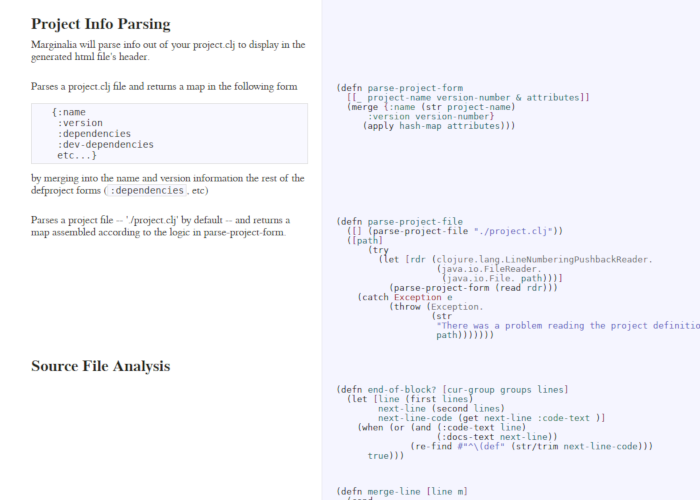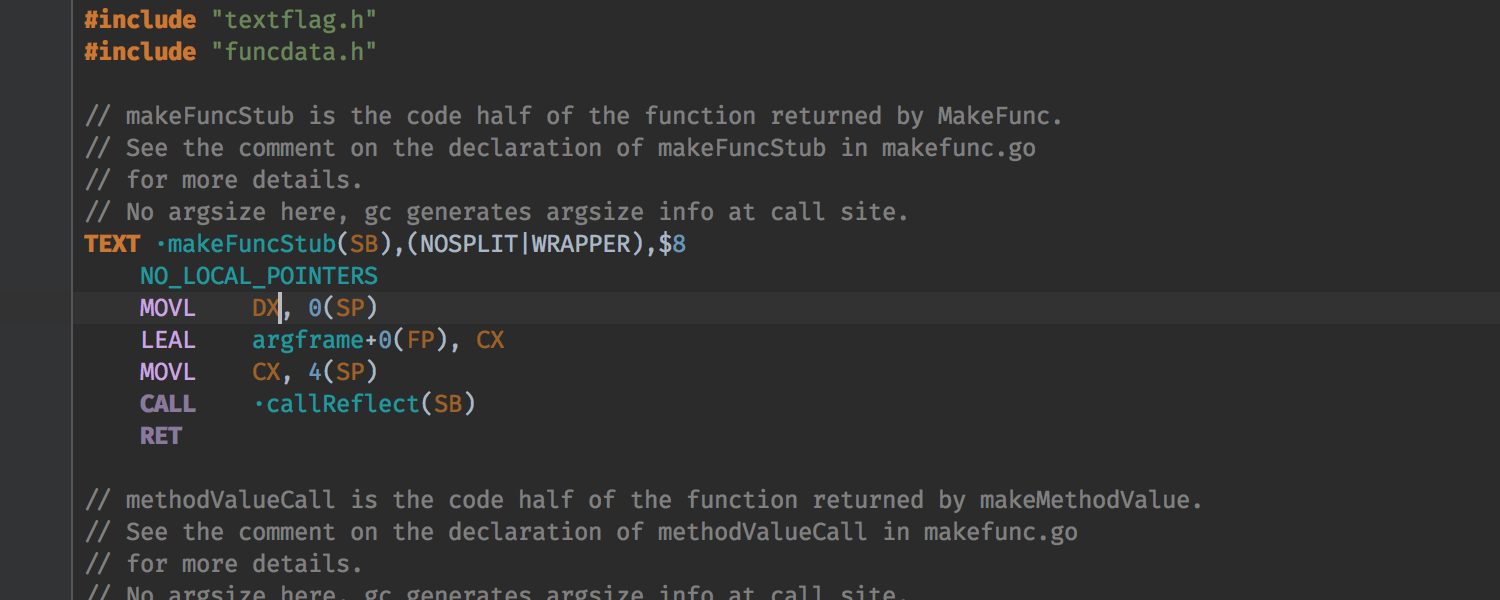Literate Programming
Singapore Clojure Meetup
June 2019
What is It?
The practitioner of literate programming can be regarded as an essayist, whose main concern is with exposition and excellence of style.
—Donald E. Knuth
Such an author, with thesaurus in hand, chooses the names of variables carefully and explains what each variable means. He or she strives for a program that is comprehensible because its concepts have been introduced in an order that is best for human understanding, using a mixture of formal and informal methods that reinforce each other.
—Donald E. Knuth
Such an author, with thesaurus in hand, chooses the names of variables carefully and explains what each variable means. He or she strives for a program that is comprehensible because its concepts have been introduced in an order that is best for human understanding, using a mixture of formal and informal methods that reinforce each other.
—Donald E. Knuth
Such an author, with thesaurus in hand, chooses the names of variables carefully and explains what each variable means. He or she strives for a program that is comprehensible because its concepts have been introduced in an order that is best for human understanding, using a mixture of formal and informal methods that reinforce each other.
—Donald E. Knuth
Ingredients
- Programming language
- Documentation formatting language
- Toolchain
Ingredients
- Programming language: Pascal
- Documentation formatting language: Tex
- Toolchain: Web
Ingredients
- Programming language: Clojure
- Documentation formatting language: Markdown
- Toolchain: Marginalia
Ingredients
- Programming language: Any
- Documentation formatting language: Org
- Toolchain: Org Babel
New Concepts
Benefits of Literate Programming
Benefits of Literate Programming
- Definiteness of purpose
- Audience
- Great documentation
Case Study: Marginalia
Description
While the phrase ultra-lightweight literate programming is used to describe Marginalia, it is in no way a tool for classical literate programming. That is, Marginalia is a linear documentation generator allowing no out-of-order reassembly of source.
— Marginalia README
Strengths & Weaknesses
- Build narrative style documentation from docstrings & comments.
- Docstrings mechanism has improved a lot since the original paper..
lein margandlein codoxcan co-exist.- No out-of-order listing of source is a deal breaker for literate programming as a development method.
Weave Looks Like This

Case Study: Org Babel
Shopping List
- Emacs
- Org Mode
- Babel
- org-babel-clojure
Org Syntax - Basics
** This is a heading
This is a normal paragraph.
Org Syntax - Code
** Here is a code block:
#+BEGIN_SRC clojure
(defn add [a b]
(+ a b))
#+END_SRC
Keyboard Driven Interface
C-RETadds a new heading.M-RETadds a new list item.M-LEFTpromotes heading/list item.M-RIGHTdemotes heading/list item.
Focus & Productivity
< s TAB expands to:
#+BEGIN_SRC █
#+END_SRC
Cursor (█) where you are going to enter the language.
C-c ' switches to a buffer that contains only the contents of the snippet.
This buffer has all the right modes set, just as if you have opened and actual
file in that language. Then you can C-c ' again to go back to your original
document.
Tangling
#+BEGIN_SRC clojure :tangle src/core.clj :mkdirp yes :comments link
#+END_SRC
:tanglespecifies the filename this code block needs to be tangled in.:mkdirp yesinstructs tangle to create directories as necessary.:comments linkwill surround tangled code with comments that refers back to the original literate programming document. This information can also be used to jump to the source if you are debugging inside Emacs.
Out of Order Definitions
This code block contains a reference to another code block:
#+BEGIN_SRC clojure :noweb yes
(divide [numerator denumerator]
<<assert_not_zero>>
(/ numerator denumerator))
#+END_SRC
#+NAME: assert_not_zero
#+BEGIN_SRC clojure
(assert (not (zero? denumerator))) ;; <- hard-coded
#+END_SRC
Org-Babel Tips
- In an org document you can mix and match languages if you are executing them
within org, not sure if similar thing can be done in babel.
C-c C-cto execute. - You can insert the result of a code block instead of its contents (source).
- While working with noweb references,
C-c C-v C-vcreates a (read-only) buffer for the current code block with all the references expanded. Good for syntax checking.
Discussion Points
Comparison with TDD
- Literate programming focuses on explaining the why and how.
- Good for experiments and teaching material.
- TDD focuses on specifying the behavior
- Good for large scale software development.
- Combination is possible and possibly tedious.
Are we trained to ignore comments?
Eclipse
IntelliJ

Visual Studio Code
Emacs
Thank You
Atamert Ölçgen
References
- Papers
- Technologies mentioned:
- Technologies used:
- Images: